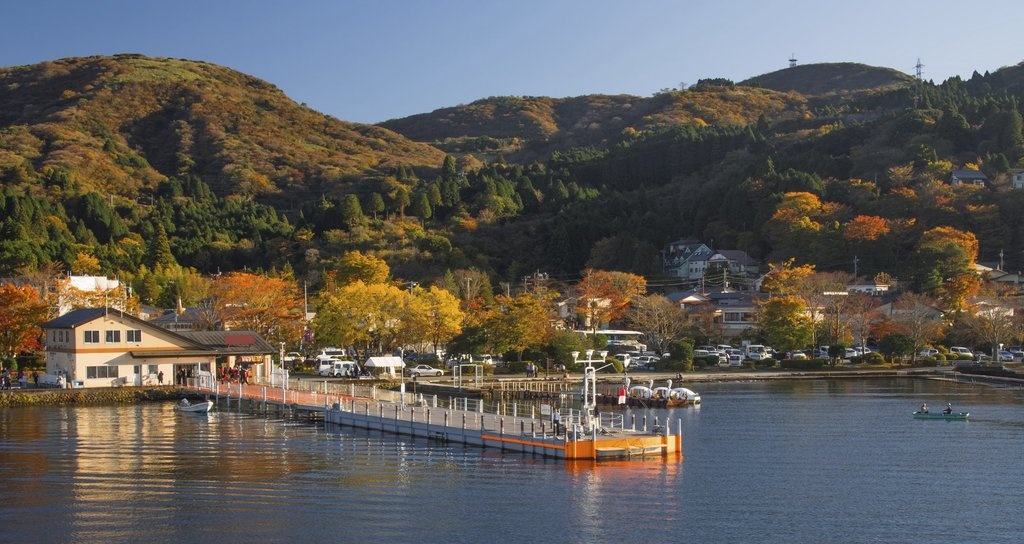The 8 Best Day Trips from Tokyo
With Tokyo being Japan's capital, there are many sites, landscapes and districts that showcase the beauty and history of this city that goes all the way back to the 16th century. On the other hand, there's timeless beauty to enjoy just outside of Tokyo. Now let's find out how far you can get in a day!
By Trip1015. Mount Fuji, Lake Ashi and Bullet Train Day Trip from Tokyo

https://trip101.com/article/not-just-mount-fuji-and-sushi-here-are-the-best-day-trips-from-tokyo
UNESCO World Heritage-listed Mount Fuji is Japan's highest mountain, standing tall at a whopping 3776 metres (12,388 feet). Interestingly, this volcano has been referred to and worshipped as a sacred mountain over the centuries. It last erupted in 1708 and is situated on the border between Yamanashi and Shizuoka. Mount Fuji can often be seen from prefectures like Tokyo and Yokohama but the views are often blocked by the clouds. The best views are actually during the winter seasons or in the early and late hours of the day.
Lake Ashi was actually found after Mount Hakone's eruption 3000 years ago. It is also the mountain's last eruption and the lake is located in Mount Hakone's caldera. There are small towns and even some lakeside resort hotels located in the east and north of the lake's mostly undeveloped shores. There is a sightseeing boat pier at the lake where the best views of Lake Ashi and Mount Fuji can be enjoyed.
In Viator's full-day tour, you can enjoy two of Japan's most well known attractions, including the Mt Komagatake Ropeway. Transportation will be by coach as well as a boat cruise at Lake Ashi. You will take the aerial tram all the way to the top of Mt Komagatake, where you can enjoy amazing views of the Owakudani volcanic valley, Hakone National Park and Mt Fuji. This is also Viator's most popular Tokyo day tour, which means that it's most likely to sell out so be quick! There is also an upgrade option available which comes with an authentic Japanese lunch that consists of local favourites such as udon, tempura and sashimi.
4. Tokyo by Bike: Skytree, Kiyosumi Garden and Sumo Stadium
The Tokyo Skytree is Japan's new television broadcasting tower and had finished its construction in 2012. It serves as a centrepiece of the Tokyo Skytree Town in the Sumida City ward and is also the landmark of Tokyo. It stands tall at 634 metres (2080 feet), or Musashi which is a historic name of the Tokyo Region and is the tallest structure in Japan, and the second tallest in the world. It has a large shopping area that includes an aquarium at the base of the tower. Its chargeable observatory decks are located at 350 (1148 feet) and 450 metres (1476 feet) and not only offers amazing views of the city's landscapes, but are also the highest observation decks in Japan.
The Kiyosumi Garden, or the Kiyosumi Teien, had originally served as residence to the Edo era merchant. When a feudal lord gained ownership, the place was turned into a garden and during the Meiji Period, the founder of Mitsubishi bought the garden to entertain his guests. It was finally donated to Tokyo and was opened to the public since 1932. Many visitors swarm this garden due to the many stones set on the grounds as it is told that landscape stones are highly valuable and sought after. Some of the ones found in the garden are well known and were acquired from all across the country. There are a few stepping stone paths located around the gardens which are called Isowatari. You can even catch a glimpse of the turtles and fishes in the pond. There is also a restaurant located in the garden that appears to be hovering over the water. Reservations are required for this restaurant.
The Sumo Stadium is located in Ryogoku, the district of many sumo-related attractions. From sumo stables to chanko restaurants, entering this district is almost like entering a sumo world. The Sumo Stadium hosts sumo events and tournaments, although some tournaments take place outdoors at the shrines and temples. The stadium, more famously known as Kokugikan, is the fourth one built in Tokyo and was used since 1985. It can have a seating capacity of over 10,000 visitors and hosts 3 annual sumo tournaments. There is also a souvenir shop selling sumo-related items. Additionally, a sumo museum is located in the premises and is open to visitors.
Viator offers a half-day tour that enables you to visit the above-mentioned attractions by bike. This small group tour, limited to just 10 riders, is 6 hours long and also consists of visits to the Fukagawa-fudo Temple and Tomioka Hachimangu Shrine, two of Tokyo’s most interesting religious sites. Beverages will be provided.





